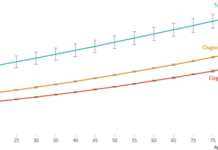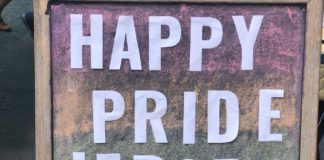
LGBTQ+ individuals face an array of challenges in accessing end-of-life and serious illness care, with some reporting discrimination from health care providers. A better understanding of sexual orientation, gender identity and family roles will aid hospices in as they work to reach these underserved communities.
Demographic trends indicate a rising need for end-of-life and serious illness care as the LGBTQ+ community ages along with the rest of the population. The number of seniors 65 and older in the United States who identify as lesbian, gay or bisexual is projected to reach 3 million, a jump from an estimated 1.5 million, reported the National Resource Center on LGBT Aging.
Members of the LGBTQ+ community are at higher risk for trauma reactions as they seek out end-of-life and serious illness care, according to Khannah Wetmore, social worker at the Hospice of the Western Reserve.
“LGBTQ+ people face discrimination from their health care providers, doctors, nurses, social workers, psychologists, etc., and are significantly more at risk for dealing with situations of sexual abuse and sexual trauma,” said Wetmore during the recent National Hospice & Palliative Care Organization’s Interdisciplinary Conference “They’re more at risk of being re-traumatized, especially when they’re needing more health care as they get older. There’s also a lot more difficulties accessing health care and having consistent access to health care. ”
Last year 15 % of LGBTQ+ individuals nationwide reported postponing or avoiding medical treatment due to discrimination, according to the Center for American Progress. This includes nearly 3-in-10 transgender individuals.
Nationwide, 27 states do not have explicit statewide laws that protect people from discrimination based on their sexual orientation or gender identity in employment, housing or public accommodations, according to a report from Freedom For All Americans.
Issues of equity, inclusion and diversity have plagued the nation’s health care system. Hospice providers have worked to improve reach to underserved LGBTQ+ communities, but have room to grow, largely in understanding their unique experiences and challenges in and around seeking out medical care. A 2018 AARP study found that 60% of the LGBTQ+ community is concerned about a lack of sensitivity to their needs among health care providers.
A 2018 survey of LGBTQ+ respondents from the Center for American Progress found that 8% had been refused by a clinician or other health care provider due to their actual or perceived sexual orientation, while 9% reported receiving that a health care provider used harsh or abusive language during their care.
Of the respondents, 7% indicated that they had experienced unwanted physical contact, such as fondling, rape or sexual assult, from a physician or health care provider.
These rates were higher among transgender individuals, with 29% reporting refusal of services due to their sexual orientation, 23% indicating being intentionally misgendered or called by their birth name rather than their preferred name, and 29% reporting unwanted physical contact.
More providers have increasingly deepened education and marketing to better engage LGBTQ+ populations. An important key to improving communication and connections with LGBTQ+ patients will be to foster understanding around the differences between sexual orientation, gender and gender identity, according to Wetmore.
“Biological sex and gender identity are not always one of the same. Gender identity and sex can be linked together, but they are not always connected,” Wetmore said. “Essentially, sex is your physical makeup, and gender is your emotional and mental makeup. Your gender expression is how all of that blends together, and how you choose to present yourself to the world. Someone’s sex, gender and gender identity might be three completely different things.”
Roughly 1-in-3 transgender adults reported having to educate their physician about their unique health care needs, according to the Center for American Progress report, which indicated that many LGBTQ+ persons reported altering their lives to “avoid this discrimination and the trauma associated with unequal treatment.”
Among the barriers LGBTQ+ individuals face is a misunderstanding of their family dynamics and structure, which can be distinct from the traditional family unit. LGBTQ+ can often, but not always, face discrimination among family members. They may use terms such as “lavender family” or “chosen family,” which are often not recognized in health care. This can hinder not only the caregiving support they receive, but also complicate decision-making at the end of life, according to Wetmore.
“Try to make an effort to understand the rules of the lavender family and understand that it’s going to differ quite a bit from what a nuclear family looks like,” said Wetmore. “It’s best to ask the patient point blank if they are able to report who is making decisions for them and who they want to appoint. Advance care planning is a major cornerstone of that, so do not tiptoe around the subject. LGBTQ+ people are significantly less likely to have actually completed any sort of health care advance directives, because they don’t know who to name and often don’t have traditional family roles.”








